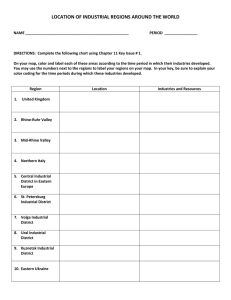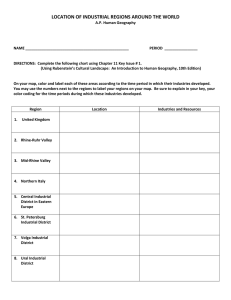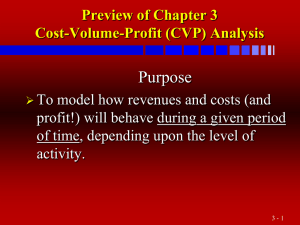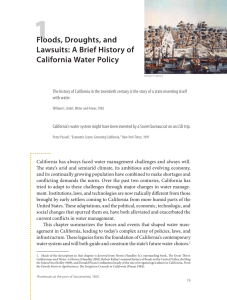California Water Wars
advertisement
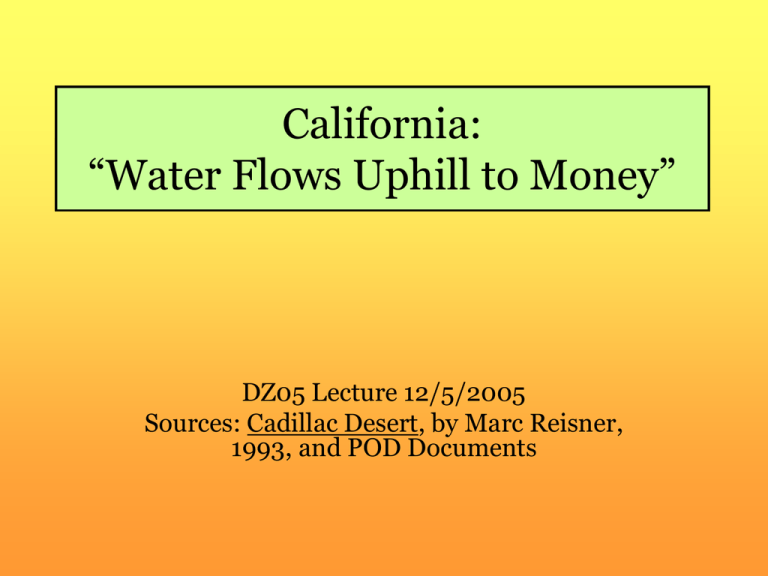
California: “Water Flows Uphill to Money” DZ05 Lecture 12/5/2005 Sources: Cadillac Desert, by Marc Reisner, 1993, and POD Documents California – some Background • Agriculture is the largest industry in the state • $18 Billion/year (1992) out of a state “GNP” of $485 Billion/year • CA uses 30% of the national pesticide production • Agriculture uses 81% of the water in the state, irrigating land that would otherwise be desert. • 60% of that water comes from rivers (the rest is groundwater – mostly pumped at unsustainable rates) • Almost all the rain that falls on the state is used at least once by humans before it evaporates or flows to the sea California Rivers, Reservoirs, and Aqueducts • The Central Valley (Sacramento Valley and San Joaquin Valley) get most of their water from aqueducts (largely from the Sacramento River) and groundwater • Los Angeles currently gets water from the Colorado River, the Owens Valley, and the Sacramento River (California Aqueduct) Delta-Mendota Canal SF California Aqueduct LA San Francisco Bay Delta • Most water comes from the Sacramento River • 30-60% is pumped out in the South Delta by the CVP & SWP * • These are actually able to reverse the flow in the Southern Delta • Confusing for fish! • CVP & SWP provide water for 20 million people and 4.5 million acres of farmland ** Prehistory • 1902 Reclamation Act (Federal) • Promoted large-scale irrigation of dry lands • We had little knowledge of potential problems such as salinization • 1930’s Great Drought • Post-WWII: invention of the centrifugal pump made it more feasible to pump groundwater CVP: Central Valley Project • 1933 Central Valley Project Act (California, not Federal, but it was soon taken on by the Feds because it needed so much money) • FDR, Depression-era project • Done through the US Bureau of Reclamation • Built CVP to pump Sacramento River Water to the Central Valley (95% of CVP water goes to agriculture) • Supposed to support small (<160 acre) farms • In reality many farms were owned by large corporations: oil, railroad, agriculture SWP: California State Water Project • The CVP didn’t irrigate the Southern San Joaquin Valley, and many large owners (esp. oil) had large tracts there • Political necessity: provide water to LA (need a lot of money to pay for it) • Built the California Aqueduct (near I-5) • Huge energy requirements for pumping • Justification: future development will be able to pay for water, no matter how expensive Environmental Consequences: Sacramento River • 4 runs of Chinook salmon, and many other fish • Before the Gold Rush (1849) the watershed had >6000 miles of spawning habitat • By the 1960’s this was reduced by 97% • Reason: dams (often motivated by irrigation, but facilitated politically by floods and drought) • 1992 Pacific Fisheries Management Council places stringent limits on the catch of California salmon (drought 1987-1992…) CVP: Act II • 1992 Central Valley Project Reform Act • Takes some water from agriculture and devotes it wetlands and fisheries, esp. in the Delta • Urban CA voted for it because they had been rationed while agriculture had not • PNW voted for it to protect their salmon fleet • Other states voted for it because they felt that CA agribusiness has been getting more than its share of federal help MOVIE • A Brief Cinematic Interlude • “Delta Revival” • US Geological Survey one of MANY players in the Delta 2005 • POD: Pelagic Organism Decline! • Despite the 1992 CVP Reform Act certain (nonsalmon) fish species in the Delta had record-low years since 2002 • This was expected during low river flow years, but these years were moderate flow • At the same time, these fish had been showing up mostly in the “salvage” operation at the CVP and SWP pumping stations • This is of great concern to the State Water Contractors! Action • Let’s have more scientific study of the problem… • And a Review Panel to study the Scientists Combined Stressors Loss of food due to competition from invasive species Fish Populations Loss of spawning adults from pumping by CVP & SWP Delta Smelt (lack of) Abundance • This and several other species are listed as endangered or threatened by the state and federal governments • But the Problems are LONG-TERM, not recent..






